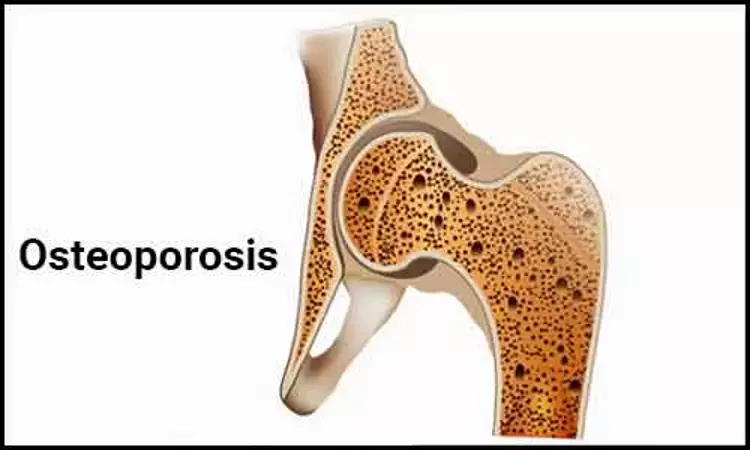- Home
- Medical news & Guidelines
- Anesthesiology
- Cardiology and CTVS
- Critical Care
- Dentistry
- Dermatology
- Diabetes and Endocrinology
- ENT
- Gastroenterology
- Medicine
- Nephrology
- Neurology
- Obstretics-Gynaecology
- Oncology
- Ophthalmology
- Orthopaedics
- Pediatrics-Neonatology
- Psychiatry
- Pulmonology
- Radiology
- Surgery
- Urology
- Laboratory Medicine
- Diet
- Nursing
- Paramedical
- Physiotherapy
- Health news
- Fact Check
- Bone Health Fact Check
- Brain Health Fact Check
- Cancer Related Fact Check
- Child Care Fact Check
- Dental and oral health fact check
- Diabetes and metabolic health fact check
- Diet and Nutrition Fact Check
- Eye and ENT Care Fact Check
- Fitness fact check
- Gut health fact check
- Heart health fact check
- Kidney health fact check
- Medical education fact check
- Men's health fact check
- Respiratory fact check
- Skin and hair care fact check
- Vaccine and Immunization fact check
- Women's health fact check
- AYUSH
- State News
- Andaman and Nicobar Islands
- Andhra Pradesh
- Arunachal Pradesh
- Assam
- Bihar
- Chandigarh
- Chattisgarh
- Dadra and Nagar Haveli
- Daman and Diu
- Delhi
- Goa
- Gujarat
- Haryana
- Himachal Pradesh
- Jammu & Kashmir
- Jharkhand
- Karnataka
- Kerala
- Ladakh
- Lakshadweep
- Madhya Pradesh
- Maharashtra
- Manipur
- Meghalaya
- Mizoram
- Nagaland
- Odisha
- Puducherry
- Punjab
- Rajasthan
- Sikkim
- Tamil Nadu
- Telangana
- Tripura
- Uttar Pradesh
- Uttrakhand
- West Bengal
- Medical Education
- Industry
Management of osteoporosis in postmenopausal women: New position statement from NAMS

USA: The North American Menopause Society (NAMS) has released a new position statement on the management of osteoporosis in postmenopausal women.
The 2021 position statement of The North American Menopause Society, published in the journal Menopause, reflects the latest thinking and findings regarding risk factors and available risk-assessment tools for identifying women who are candidates for pharmacologic therapy, as well as clarification of appropriate intakes of calcium, vitamin D, and protein to maintain bone health.
NAMS released its last position statement on osteoporosis in 2010. Since that time, important advances have been made in the assessment, prevention, and treatment of osteoporosis in postmenopausal women. For example, a preparation containing conjugated estrogens combined with bazedoxifene, rather than a progestin, received approval for osteoporosis prevention, as did three targeted therapies, including two bone-building drugs, for the treatment of women with osteoporosis at high risk of fracture.
According to Dr. Michael McClung, a member of the NAMS board and Co-Lead of the Editorial Panel for the 2021 Osteoporosis Position Statement, NAMS reviewed data on these therapies, as well as on emerging treatment modalities, when drafting its findings. "Education regarding a woman's skeletal health risks is critical during the menopause transition," says Dr. McClung. "The recommendations made in the updated position statement include strategies designed to minimize bone loss as a way to prevent fractures and help women maintain mobility and independence."
Highlights from the 2021 position statement on osteoporosis management include
- Approximately half of women aged 50 years will experience a fracture related to osteoporosis in their lifetimes, often resulting in significant symptoms and impairment of function and quality of life, but the disorder is substantially underdiagnosed and undertreated.
- Estrogen deficiency at menopause is the primary cause of bone loss that leads to osteoporosis.
- Even with optimal general measures such as good nutrition and regular physical activity, osteoporosis progresses with advancing age unless it is treated. Because there is no cure for osteoporosis, life-long management is required once the diagnosis has been made.
- Hormone therapy is the most appropriate choice to prevent bone loss at the time of menopause for healthy women, particularly those who have menopause symptoms.
- Bone mineral density measured while on treatment correlates with the patient's current risk of fracture, providing justification for the use of the T-score at the hip as an appropriate clinical target guiding choices of therapy.
- Although antiremodeling drugs such as bisphosphonates and denosumab are the drugs chosen to treat most patients with osteoporosis, a new paradigm of beginning treatment with a bone-building agent followed by an antiremodeling agent is recommended for women at very high risk of fracture.
"This new position statement on osteoporosis provides clinicians with a practical guide to assessing and managing bone health in postmenopausal women and emphasizes an individualized approach with regular follow-up and adjustment based on changing clinical needs and patient preference," says Dr. Stephanie Faubion, NAMS medical director.
Reference:
"Management of osteoporosis in postmenopausal women: the 2021 position statement of The North American Menopause Society," is published in Menopause: The Journal of The North American Menopause Society.
DOI: http://www.menopause.org/docs/default-source/professional/2021-osteoporosis-position-statement.pdf
Hina Zahid Joined Medical Dialogue in 2017 with a passion to work as a Reporter. She coordinates with various national and international journals and association and covers all the stories related to Medical guidelines, Medical Journals, rare medical surgeries as well as all the updates in the medical field. Email: editorial@medicaldialogues.in. Contact no. 011-43720751
Dr Kamal Kant Kohli-MBBS, DTCD- a chest specialist with more than 30 years of practice and a flair for writing clinical articles, Dr Kamal Kant Kohli joined Medical Dialogues as a Chief Editor of Medical News. Besides writing articles, as an editor, he proofreads and verifies all the medical content published on Medical Dialogues including those coming from journals, studies,medical conferences,guidelines etc. Email: drkohli@medicaldialogues.in. Contact no. 011-43720751


